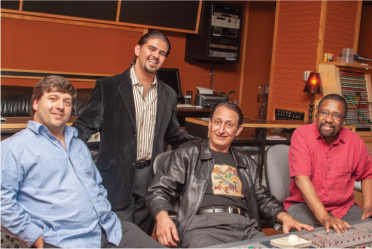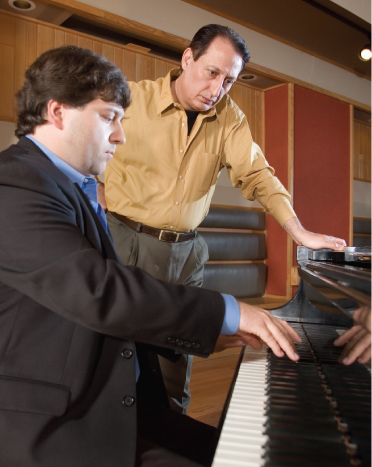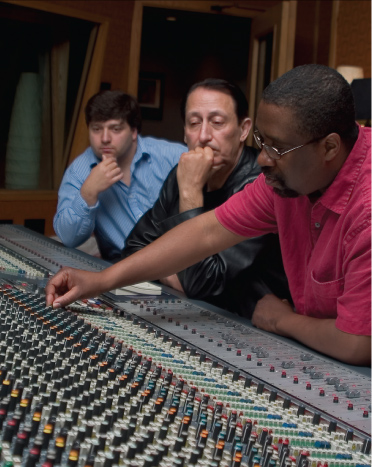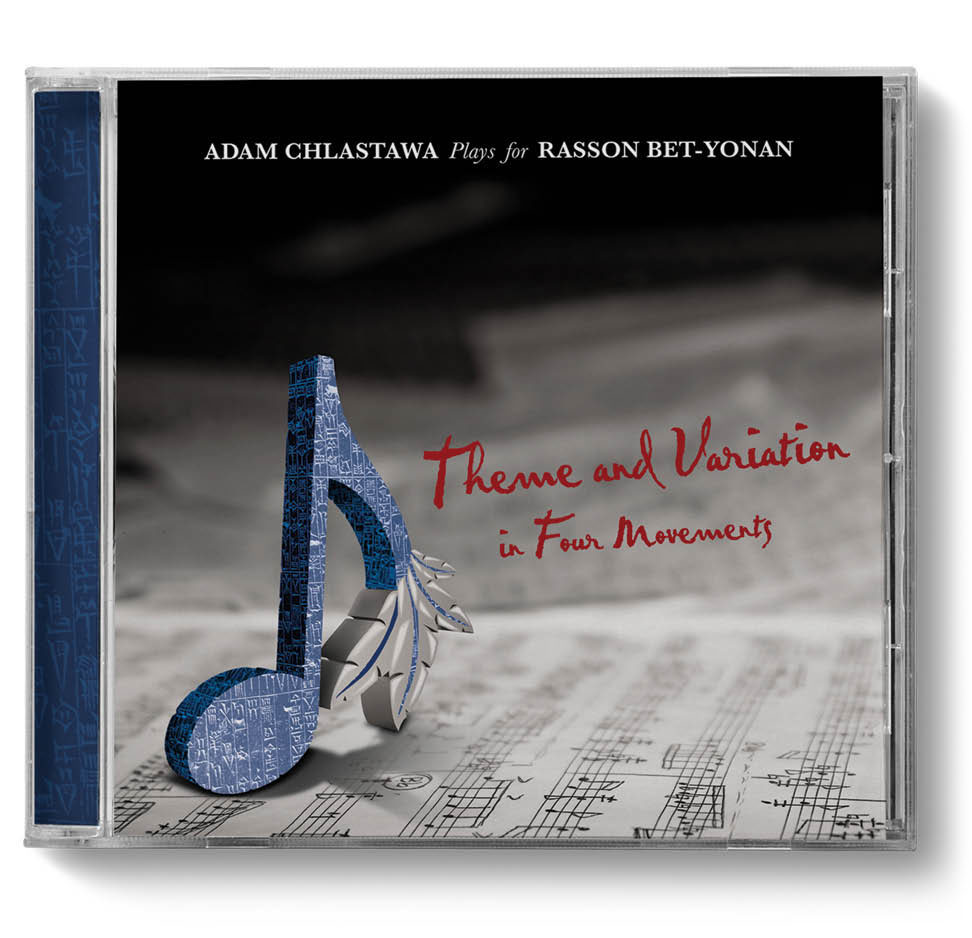
The Kinnara Production logo, designed by Rabel, was inspired by Lyre of Ur

Shlimon Betshmuel’s Echo of Nineveh album that featured the song Road to Nineveh

L to R: Adam Chlastawa, Rabel Betshmuel, Rasson Bet-Yonan and Dennis Tousana at Chicago Recording Company

Adam Chlastawa and Rasson Bet-Yonan during the recording of Theme and Variations in Four Movements

Putting finishing touches on the final mix
KINNARA PRODUCTIONS
Recording of Theme and Variation in Four Movements
Rabel Betshmuel created Kinnara Productions in 2007 as alternate form of creative output. Its mission is to bring Assyrian culture to an international audience via music. Assyrians of the past have given so much to the world, but due to social and political deterrents, modern Assyrians have not yet made equally significant contributions. Of particular concern is the progress of the Assyrian arts, specifically in regard to music. The key to the long-term preservation of this ancient musical culture, Rabel believes, lies in the creation and development of new sounds. Kinnara Productions is rising to the challenge by taking on projects that require originality and new compositions.
Rabel has a keen ear for music production. His love for music was sparked when he was very young. Around the age of seven, he became mesmerized upon hearing the song Road to Nineveh. It was written and composed by his uncle Shlimon Betshmuel, and arranged by the acclaimed composer Rasson Bet-Yonan. As a young child, Rabel studied piano with Rasson for a few years. The experience made a lasting impression on him.
Through years of effort, Rasson Bet-Yonan collected secular and sacred music of many different Assyrian localities. He composed classical music worthy of international acclaim. His knowledge and skill have enabled him to create powerfully moving experiences for his audiences, and his work is a tremendous contribution to Assyrian culture.
Theme and Variations in Four Movements, one of Rasson’s works for piano, is based on Assyrian folk melodies. On hearing it, Rabel quickly came to believe that this extraordinary piece and others of Rasson’s compositions could mark a turning point in modern Assyrian culture. He was convinced that they should be central in the essential, long-delayed process of bringing Assyrian music to an international audience.
In 2005, fifteen years after his last piano lesson, Rabel reconnected with Rasson and offered to produce his first album. He began working to raise necessary funds in December 2005. Supported by private donors, the recording sessions began in the fall of 2006. In addition to serving as executive producer, Rabel designed the branding for the album and its website.
Rasson had created the four movements to reflect the emotional makeup of the Assyrian people in each stage of their history. The first movement portrays the power that was Assyria at the peak of its civilization. The second represents the distress of the Assyrian people under conquest, following the downfall of their empire; a rather vivid portrayal of expulsion, dispersion, and centuries of unceasing massacres. The third movement reveals the remnants of the Assyrian people’s survival in modern times, in their state of uncertainty and confused identity. The last movement expresses our aspirations, objectives, and determination to establish their deserved place in the world community.
In the recording, Theme and Variations in Four Movements is performed by Adam Chlastawa, a native of Poland, who began playing the piano at the age of six. He graduated with honors from two music academies: in 1997 from music school in Tarnow, Poland, and in 2002 from the Chicago Music Conservatory at Roosevelt University, where he studied with renowned pianist Pawel Checinski.
The recording process took a full year to complete, due to an exceedingly difficult original score that required multiple recording sessions. This presented additional challenges: in order to make the final recording sound as though it was captured in one sitting, the recording studio had to be set exactly the same way at each session. The microphones had to be at identical distances from the piano, which had to be in precisely the same place in the room. Any variation would create an evident, unacceptable flaw in the finished product.
Dennis Tousana at Chicago Recording Company engineered the recording, which was completed with a minimal amount of EQ, using a Pro Tools HD3 rig at the 24bit/96K sampling. The setup consisted of two B&K 4006 microphones up close and two Blue Kiwi microphones to capture the room.
Once recording was complete, it was time for Dennis to create the mix—that is, to balance the sound captured by the four microphones and create the illusion that the entire piece was recorded in a single, uninterrupted session. Theme and Variations in Four Movements was released in January 2008. The album can be streamed or purchased via all online
music services.

